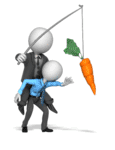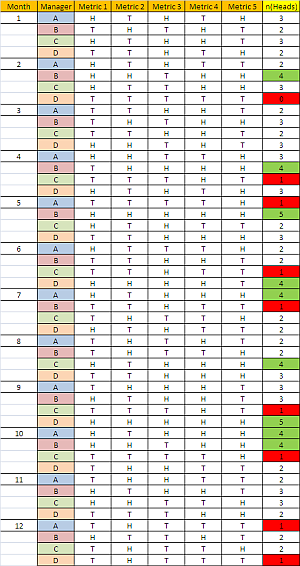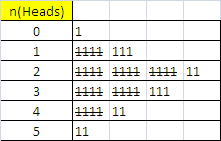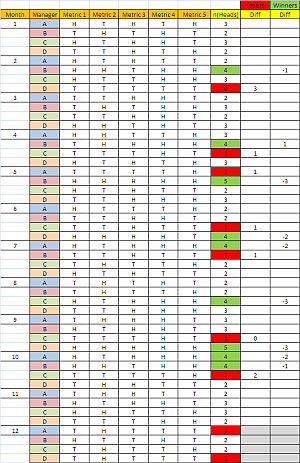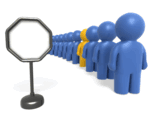 The modern era in science started about 500 years ago when an increasing number of people started to challenge the dogma that our future is decided by Fates and Gods. That we had no influence. And to appease the ‘Gods’ we had to do as we were told. That was our only hope of Salvation.
The modern era in science started about 500 years ago when an increasing number of people started to challenge the dogma that our future is decided by Fates and Gods. That we had no influence. And to appease the ‘Gods’ we had to do as we were told. That was our only hope of Salvation.
This paradigm came under increasing pressure as the evidence presented by Reality did not match the Rhetoric. Many early innovators paid for their impertinence with their fortunes, their freedom and often their future. They were burned as heretics.
When the old paradigm finally gave way and the Age of Enlightenment dawned the pendulum swung the other way – and the new paradigm became the ‘mechanical universe’. Isaac Newton showed that it was possible to predict, with very high accuracy, the motion of the planets just by adopting some simple rules and a new form of mathematics called calculus. This opened a door into a more hopeful world – if Nature follows strict rules and we know what they are then we can learn to control Nature and get what we need without having to appease any Gods (or priests).
This was the door to the Industrial Revolutions – there have been more that one – each lasting about 100 years (18th C, 19th C and 20th C). Each was associated with massive population growth as we systematically eliminated the causes of early mortality – starvation and infectious disease.
But not everything behaved like the orderly clockwork of the planets and the pendulums. There was still the capricious and unpredictable behaviour that we call Lady Luck. Had the Gods retreated but were still playing dice?
Progress was made here too – and the history of the ‘understanding of chance’ is peppered with precocious and prickly mathematical savants who discovered that chance follows rules too. Probability theory was born and that spawned a troublesome child called Statistics. This was a trickier one to understand. To most people statistics is just mathematical gobbledygook.
But from that emerged a concept called the Rational Man – which underpinned the whole of Economic Theory for 250 years. Until very recently. The RM hypothesis stated that we make unconscious but rational judgements when presented with uncertain win/lose choices. And from that seed sprouted concepts such as the Law of Supply and Demand – when the supply of things we demand are limited then we (rationally) value them more and will choose to pay more so prices go up so fewer can afford them so demand drops. Foxes and Rabbits. A negative feedback loop. The economic system becomes self-adjusting and self-stabilising. The outcome of this assumption is a belief that ‘because people are collectively rational the economic system will be self-stabilising and it will correct the adverse short term effects of any policy blunders we make‘. The ‘let-the-market-decide’ belief that experimental economic meddling is harmless over the long term and what is learned from ‘laissez-faire’ may even be helpful. It is a no-lose long term improvement strategy. Losers are just unlucky, stupid or both.
In 2002 the Nobel Prize for Economics was not awarded to an economist. It was awarded to a psychologist – Daniel Kahneman – who showed that the model of the Rational Man did not stand up to rigorous psychological experiment. Reality demonstrated we are Irrational Chimps. The economists had omitted to test their hypothesis. Oops!
This lesson has many implications for the Science of Improvement. One of which is a deeper understanding of the nemesis of improvement – resistance to change.
One of the surprising findings is that our judgements are biased – and our bias operates at an unconscious level – what Kahneman describes as the System One level. Chimp level. We are not aware we are making biased decisions.
For example. Many assume that we prefer certainty to uncertainty. We fear the unpredictable. We avoid it. We seek the predictable and the stable. And we will put up with just about anything so long as it is predictable. We do not like surprises. And when presented with that assertion most people nod and say ‘Yes’ – that feels right.
We also prefer gain to loss. We love winning. We hate losing. This ‘competitive spirit’ is socially reinforced from day one by our ‘pushy parents’ – we all know the ones – but we all do it to some degree. Do better! Work harder! Be a success! Optimize! Be the best! Be perfect! Be Perfect! BE PERFECT.
So which is more important to us? Losing or uncertainty? This is one question that Kahneman asked. And the answer he discovered was surprising – because it effectively disproved the Rational Man hypothesis. And this is how a psychologist earned a Nobel Prize for Economics.
Kahneman discovered that loss is more important to us than uncertainty.
To demonstrate this he presented subjects with a choice between two win/lose options; and he presented the choice in two ways. To a statistician and a Rational Man the outcomes were exactly the same in terms of gain or loss. He designed the experiment to ensure that it was the unconscious judgement that was being measured – the intuitive gut reaction. So if our gut reactions are Rational then the choice and the way the choice was presented would have no significant effect.
There was an effect. The hypothesis was disproved.
The evidence showed that our gut reactions are biased … and in an interesting way.
If we are presented with the choice between a certain gain and an uncertain gain/loss (so the average gain is the same) then we choose the certain gain much more often. We avoid uncertainty. Uncertainly =1 Loss=0.
BUT …
If we are presented with a choice between certain loss and an uncertain loss/gain (so the average outcome is again the same) then we choose the uncertain option much more often. This is exactly the opposite of what was expected.
And it did not make any difference if the subject knew the results of the experiment before doing it. The judgement is made out of awareness and communicated to our consciousness via an emotion – a feeling – that biases our slower, logical, conscious decision process.
This means that the sense of loss has more influence on our judgement than the sense of uncertainty.
This behaviour is hard-wired. It is part of our Chimp brain design. And once we know this we can see the effect of it everywhere.
1. We will avoid the pain of uncertainty and resist any change that might deliver a gain when we believe that future loss is uncertain. We are conservative and over-optimistic.
2. We will accept the pain of uncertainty and only try something new (and risky) when we believe that to do otherwise will result in certain loss. The Backs Against The Wall scenario. The Cornered Rat is Unpredictable and Dangerous scenario.
This explains why we resist any change right up until the point when we see Reality clearly enough to believe that we are definitely going to lose something important if we do nothing. Lose our reputation, lose our job, lose our security, lose our freedom or lose our lives. That is a transformational event. A Road to Damascus moment.
 Understanding that we behave like curious, playful, social but irrational chimps is one key to unlocking significant and sustained improvement.
Understanding that we behave like curious, playful, social but irrational chimps is one key to unlocking significant and sustained improvement.
We need to celebrate our inner chimp – it is key to innovation.
And we need to learn how to team up with our inner chimp rather than be hijacked by it.
If we do not we will fail – the Laws of Physics, Probability and Psychology decree it.

